After years of development, fiber laser cutting machines have significantly improved production efficiency in various industries and are becoming more and more popular in various industries.
The optical fiber laser cutting machine uses laser technology for processing and production, which is a non-contact method.
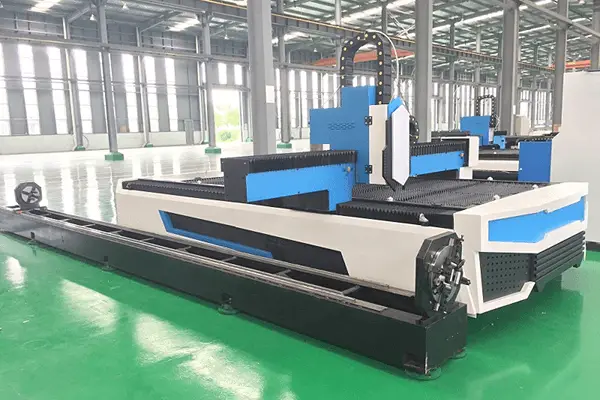
Compared with traditional methods, fiber laser cutting machines do not cause deformation or damage to the material and provide fast and accurate processing.
As a result, more and more companies are choosing to invest in fiber laser cutting machines.
Purchasing a fiber laser cutting machine is a crucial decision for many companies.
However, with the growing number of fiber laser cutting machine brands, prices on the market can vary greatly.
This can make it difficult for buyers to make a confident decision.
Choosing the wrong equipment that does not meet your needs can result not only in wasted initial capital investment, but also in missed opportunities during the company's growth period.
For businesses with limited funds, making the wrong fiber laser cutting machine choice can even lead to significant losses or bankruptcy.
Therefore, it is important to research thoroughly and choose the right equipment when purchasing a fiber laser cutting machine. This investment will benefit your business for at least 10 years.
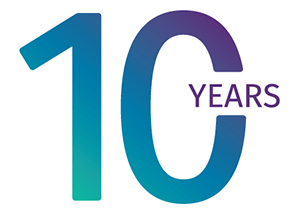
You understand the importance of 10 years for the growth of a company.
Since many companies may be purchasing a fiber laser cutting machine for the first time and may not be familiar with the technology, this article will provide background information to provide a preliminary understanding of the machine and then delve into how to choose the right one. right fiber laser. cutting machine.
About laser cutting
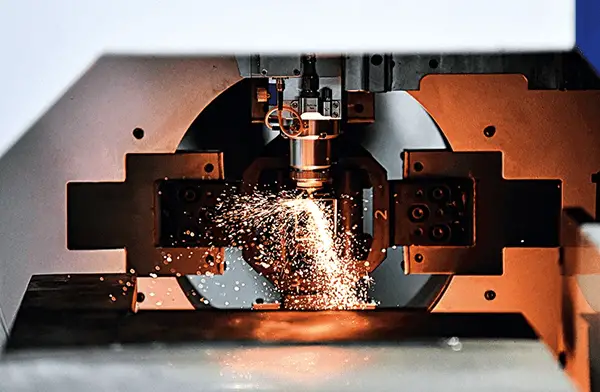
Laser cutting principle
Laser cutting involves directing a highly focused and intense laser beam at the workpiece, causing the material to melt, vaporize, ablate or ignite rapidly, and then blowing the molten material away with the help of a stream of high-velocity air that is coaxial with the beam. This process is used to cut the workpiece.
Laser cutting is a type of thermal cutting method.
The following illustration shows the principle of laser cutting:
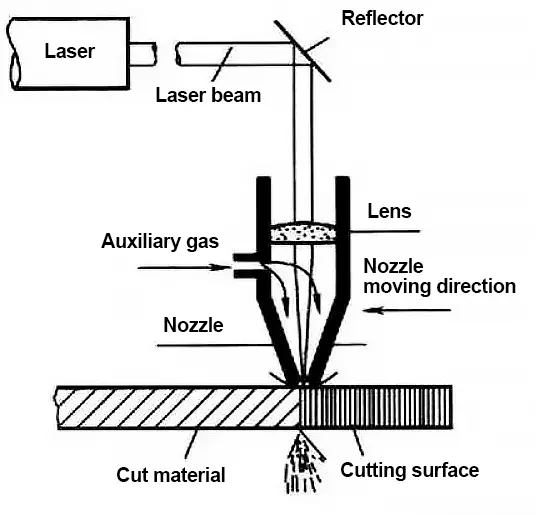
Laser cutting classification
Laser cutting can be classified into four categories: laser vaporization cutting, laser fusion cutting, laser oxygen cutting, and laser engraving and fracture control.
(1) Laser vaporization cutting:
The high energy density laser beam heats the part, causing its temperature to increase rapidly and reach the material's boiling point in a short space of time. The material begins to vaporize and form steam, which is expelled at high speed and forms an indentation in the material.
Laser vaporization cutting requires high power and power density due to the heat of vaporization of materials. It is mainly used to cut thin metal materials and non-metal materials such as paper, cloth, wood, plastic and rubber.
(2) Laser fusion cutting:
During laser fusion cutting, the metal material is melted by the heat of the laser and a non-oxidizing gas (Ar, He, N, etc.) is then injected through a nozzle that is coaxial with the beam to discharge the liquid metal and form a notch with the help of strong gas pressure.
Laser fusion cutting does not require complete vaporization of the metal and uses only 1/10 of the energy required for vaporization cutting. It is mainly used to cut active materials or metals that are not easily oxidized, such as stainless steel, titanium, aluminum and their alloys.
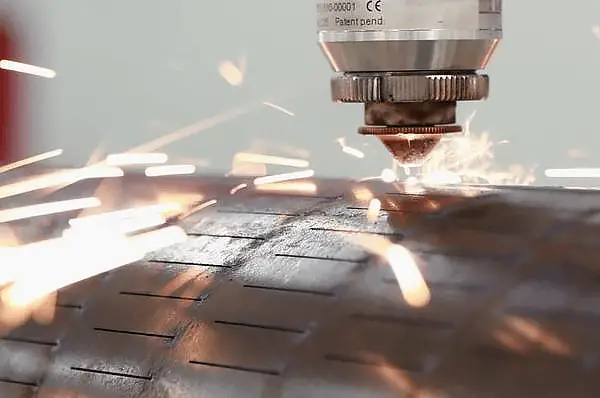
(3) Laser oxygen cutting:
The principle of oxygen laser cutting is similar to oxyacetylene cutting, using the laser as the preheating heat source and an active gas such as oxygen as the cutting gas. The injected gas reacts with the cutting metal to produce an oxidation reaction and release a large amount of heat.
At the same time, molten oxide and melt are expelled from the reaction zone to form a notch in the metal.
Oxygen laser cutting requires only half the energy used in fusion cutting and has a much higher cutting speed compared to laser vaporization cutting and laser fusion cutting. This method is mainly used to cut easily oxidized metal materials such as carbon steel, titanium steel and heat-treated steel.
(4) Laser marking and fracture control:
Laser engraving involves scanning the surface of brittle materials with a high-energy density laser, heating and evaporating the material in a small groove, and then applying pressure to cause the brittle material to crack along the groove. Q-switched lasers and CO2 lasers are commonly used for laser marking.
Controlled fracture uses the sharp temperature distribution generated by the laser channel to produce local thermal stress in brittle materials, leading to the materials breaking along small grooves.
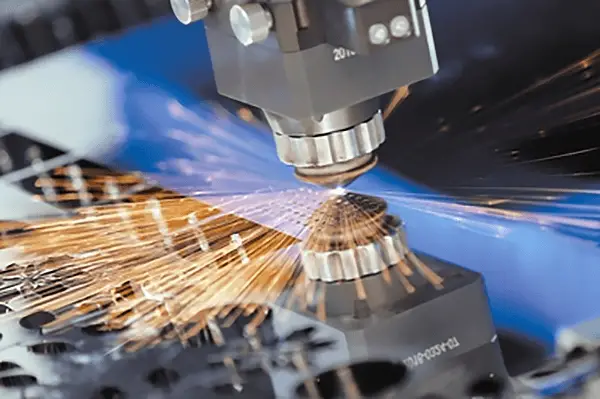
Features of laser cutting
Compared to other thermal cutting methods, laser cutting is known for its fast cutting speed and high-quality results.
Some key advantages of laser cutting include:
(1) Excellent cutting quality:
Laser cutting offers better cutting quality due to its small laser spot, high energy density and fast cutting speed.
- The laser cutting incision is thin and narrow, with both sides of the cutting seam parallel and perpendicular to the surface. The dimensional accuracy of cut parts can reach ±0.05mm.
- The cutting surface is smooth and attractive, with a surface roughness of just tens of microns. In some cases, laser cutting can even be used as a final process without additional machining, allowing direct use of the parts.
- The width of the heat-affected zone is very small after laser cutting, and the material near the cutting seam is almost unaffected. In addition, the deformation of the part is minimal, the cutting accuracy is high, the geometry of the cutting seam is good, and the cross-sectional shape of the cutting seam is a regular rectangle.
Table 1 compares laser cutting, oxyacetylene cutting, and plasma cutting methods. The cutting material used was a 6.2mm thick low carbon steel sheet.
Table 1 Comparison and calibration of laser cutting, oxyacetylene cutting and plasma cutting methods
| Cutting method | Slit width | Width of heat affected zone / mm | slit shape | Cutting speed | Equipment cost |
| Laser cut | 0.2-0.3 | 0.04-0.06 | Parallel | Fast | High |
| Oxyacetylene cutting | 0.9-1.2 | 0.6-1.2 | Relative parallel | Slow | Low |
| plasma cutting | 3.0-4.0 | 0.5-1.0 | Wedge and sloping | Fast | Medium and high |
(2) High cutting efficiency
Laser cutting machines are equipped with multiple NC work tables due to the transmission characteristics of lasers, allowing a fully numerically controlled cutting process.
During operation, different shapes can be cut by simply changing the NC program, allowing two-dimensional and three-dimensional cutting.
(3) Fast cutting speed
With a 1200 W laser, a 2 mm thick low carbon steel plate can be cut at a speed of 600 cm/min, while a 5 mm thick polypropylene resin plate can be cut at a speed of 1200 cm/min.
The material does not need to be clamped or clamped during the cutting process, saving time and reducing the need for tools and accessories.
The speed of laser cutting can be referred to this article .
(4) Contactless cutting
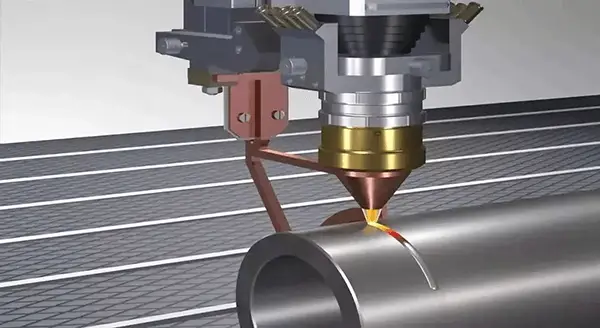
In laser cutting, the cutting torch does not come into contact with the workpiece, resulting in no tool wear.
To cut pieces with different shapes, it is not necessary to change the “tool”, just the laser output parameters.
Furthermore, the laser cutting process has the benefits of low noise, minimal vibration and no pollution.
(5) Wide range of cut materials
Laser cutting offers a greater variety of materials to cut compared to oxyacetylene and plasma cutting, including metal, non-metal, metal matrix composites, non-metal matrix composites, leather, wood and fiber.
However, the laser cutting adaptability of these materials varies due to their different thermophysical properties and laser absorption capacity.
(6) Disability
Limitations in laser power and equipment size limit laser cutting to medium and small thickness plates and tubes.
Furthermore, the cutting speed decreases significantly as the part thickness increases. The cost of laser cutting equipment is high and requires a large initial investment.
About laser cutting machine
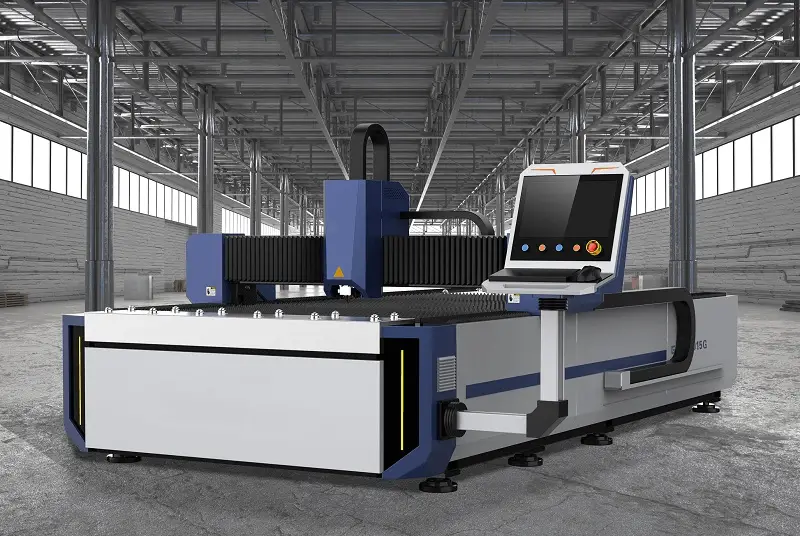
The laser cutting machine focuses the emitted laser into a high-power laser beam through its optical path system.
The laser beam then heats the surface of the part to its melting or boiling point. Simultaneously, high-pressure gas coaxial with the beam removes molten or vaporized metal.
By adjusting the relative position between the beam and the workpiece, the material is finally cut into the desired shape.
Metals that can be laser cut
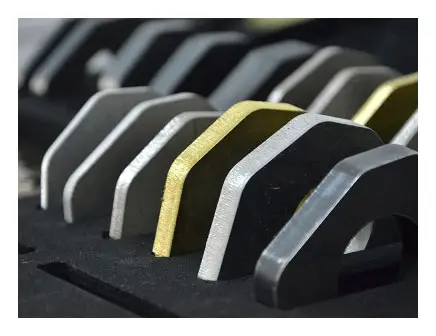
Structural steel
Cutting with oxygen results in better results. When oxygen is used as the processing gas, the cutting edge will undergo slight oxidation.
For sheets with a thickness of up to 4 mm, high pressure cutting can be carried out using nitrogen as the processing gas, which will prevent oxidation of the cutting edge.
For plates thicker than 10 mm, using special laser plates and lubricating the surface of the part during processing will produce good results.
Stainless steel
Oxygen can be used if oxidation of the cutting end face is acceptable. The use of nitrogen results in oxidation- and burr-free cutting edges, and no additional treatment is required.
Applying a layer of oil to the surface of the plate will increase the drilling effect without compromising the processing quality.
Aluminum
Although aluminum has high reflectivity and thermal conductivity, it can still be cut less than 6 mm thick depending on the alloy type and laser capability. When cutting with oxygen, the cutting surface will be rough and hard.
However, using nitrogen results in a smoother cutting surface. Pure aluminum is difficult to cut due to its high purity, and can only be cut by installing a “reflection absorption” device in the system. Without this device, reflection will damage the optical components.
Titanium
Titanium plates are cut using argon and nitrogen as processing gases. Other parameters can be referred to those used for nickel-chromium steel.
Copper and brass
Both brass and copper have high reflectivity and excellent thermal conductivity. Brass with a thickness of less than 1 mm can be cut using nitrogen, while copper with a thickness of less than 2 mm can be cut using oxygen as the processing gas.
However, both brass and copper can only be cut if a “reflection absorption” device is installed in the system; otherwise, reflection will damage the optical components.
What is a fiber laser cutting machine?
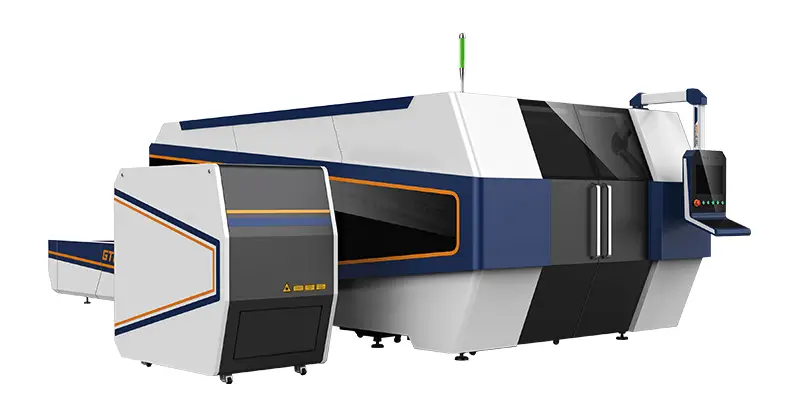
The fiber laser cutting machine uses a fiber laser generator as a light source. Fiber laser is a new type of laser that has been developed globally.
The high-energy density laser beam is focused on the surface of the workpiece, causing the area illuminated by the ultra-fine focus spot to instantly melt and vaporize. The mechanical numerical control system moves the point to achieve automatic cutting.
Compared with traditional gas and solid-state lasers, fiber lasers have significant advantages and have become a major player in high-precision laser processing, lidar systems, space technology, laser medicine and more.
The fiber optic laser cutting machine can perform flat and angled cuts, producing perfect and smooth edges. It is ideal for high-precision cutting of metal plates.
Furthermore, by incorporating a mechanical arm, the machine can perform three-dimensional cuts, eliminating the need for a five-axis laser.
Compared with conventional carbon dioxide laser cutting machines, fiber laser cutting machine requires less space and gas consumption and has a higher photoelectric conversion rate.
It is a new product that saves energy and is environmentally friendly, and is considered one of the world's leading technologies.
Application of fiber laser cutting machine
Most laser cutting machines are operated via NC programs or integrated into cutting robots.
As a precise machining method, laser cutting can cut almost all materials, including two-dimensional and three-dimensional cutting of thin metal plates.
Laser cutting forming technology is also widely applied in the field of non-metallic materials.
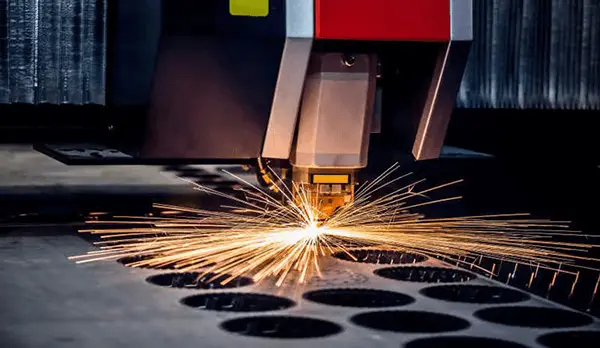
Optical fiber laser cutting machine is widely used in various manufacturing and processing industries, including sheet metal processing, aviation, aerospace, electronics, household appliances, subway accessories, automobiles, grain machinery, textile machinery, engineering machinery , precision accessories, ships, metallurgy equipment, elevators, household appliances, handmade gifts, tool processing, decoration, advertising, external metal processing and kitchenware processing.
Different cutting and slicing methods have their limitations and are best suited for specific applications in industrial production. The development and use of laser cutting machines is a major advancement and innovation in modern industrial production.
Working Principle of Fiber Laser Cutting Machine
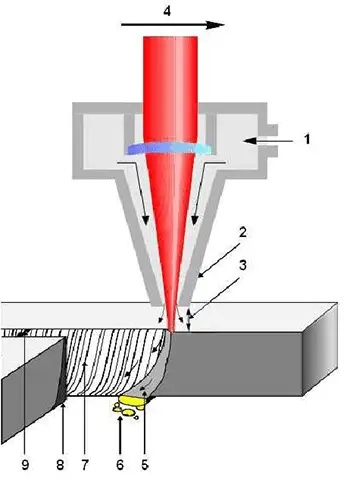
Fiber laser cutting machine is a high-tech device that combines advanced fiber laser technology, numerical control technology and precision machine technology. It uses a state-of-the-art fiber laser to produce a high energy density laser beam.
The beam is focused on the surface of the part through the cutting head, forming a small spot with a diameter of up to 0.1 mm. The area illuminated by the ultra-fine spotlight instantly melts and vaporizes, forming a hole.
The mechanical numerical control system moves the laser spot irradiation position, making the hole continuously form a narrow gap and achieve automatic cutting.
Types of Fiber Laser Cutting Machines
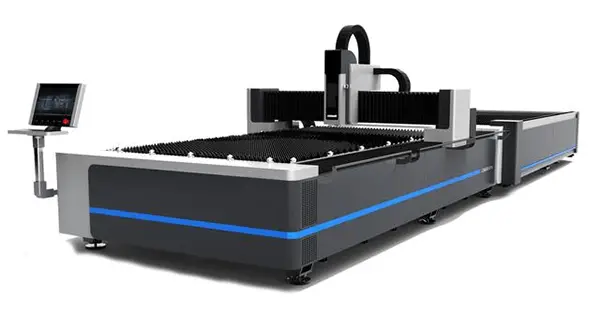
Fiber laser cutting machine can be classified based on power into:
- Low Power Fiber Laser Cutting Machine
- Medium Power Fiber Laser Cutting Machine
- High Power Fiber Laser Cutting Machine
If classified based on cutting materials, the common types on the market are:
- Aluminum Alloy Laser Cutting Machine
- Stainless Steel Laser Cutting Machine
- Carbon Steel Laser Cutting Machine
It is important to consider the material used when selecting equipment, as different materials will require different equipment.
If classified based on usage, fiber laser cutting machine can be divided into:
- Plate Optical Fiber Laser Cutting Machine
- Medium and Heavy Plate Optical Fiber Laser Cutting Machine
- Medium and Thin Plate Optical Fiber Laser Cutting Machine
This classification is simpler as it mainly refers to different processing materials.
In addition, fiber laser cutting machine can also be classified based on the structure of the equipment, which can be mainly divided into:
- Single Table Fiber Laser Cutting Machine
- Changing Table Fiber Laser Cutting Machine
Advantages of Fiber Laser Cutting Machine
Advantages of fiber laser cutting machine over CO2 laser cutting machine
The fiber laser cutting machine has several advantages, including:
(1) Excellent beam quality – Smaller focus spot and finer cutting lines result in higher work efficiency and better processing quality.
(2) Extremely high cutting speed – The cutting speed is twice that of a CO2 laser cutting machine with the same power.
(3) High stability – The machine uses the world's most imported fiber laser, which has stable performance and main components that can last up to 100,000 hours.
(4) High electro-optical conversion efficiency – The fiber laser cutting machine has a photoelectric conversion efficiency of about 30%, which is three times that of a CO2 laser cutting machine, making it more efficient in energy terms and ecologically correct.
(5) Very low usage cost – The power consumption of the machine is only 20-30% of similar CO2 laser cutting machines.
(6) Very low maintenance costs – The machine does not require laser working gas and has reflectorless optical fiber transmission, saving on maintenance costs.
(7) Easy operation and maintenance – Optical fiber transmission eliminates the need to adjust the optical path.
(8) Super flexible light guide effect – Small size and compact structure make it easy to meet flexible processing requirements.
However, compared with a carbon dioxide laser cutting machine, the cutting range of a fiber laser is relatively narrow. Due to the wavelength, it only cuts metallic materials, and non-metallic materials are not easily absorbed, limiting its cutting range.
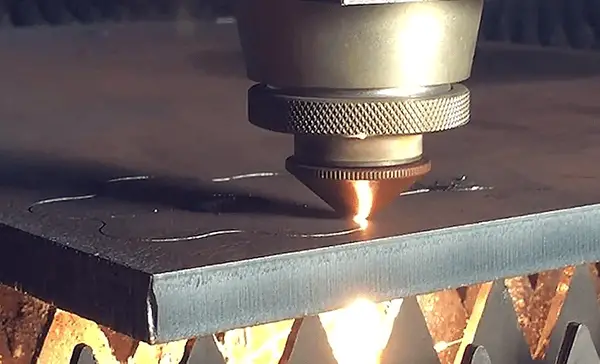
Advantages of fiber laser cutting machine over YAG laser cutting machine
Fiber laser cutting machine has several advantages compared with YAG solid state laser cutting, including:
(1) Cutting speed – The cutting speed of the fiber laser cutting machine is 4-5 times faster, making it suitable for processing and mass production.
(2) Using cost – The using cost of fiber laser cutting machine is lower than that of YAG solid state laser cutting machine.
(3) Photoelectric conversion efficiency – The photoelectric conversion efficiency of fiber laser cutting machine is about 10 times that of YAG.
Although the fiber laser cutting machine may have a higher price than the YAG laser cutting machine, it is still cheaper than a carbon dioxide laser cutting machine.
Despite the high price, the fiber laser cutting machine has the best performance-price ratio of the three.
Comparison with other blanking methods
| Technique | Slit (mm) | Deformation | Precision | Graphic change | Speed | Cost |
| Laser cut | Small 0.1-0.3 | Small | High 0.2mm | Very easy | Slow | High |
| plasma cutting | Small | Big | High 1mm | Very easy | Fast | Low |
| Water gun | Big | Small | High | Easy | Fast | High |
| Cutting and creasing | Small | Big | Low | Hard | Fast | Low |
| Sawing | Big | Small | Low | Hard | Very slowly | Low |
| Wire cutting | Small | Small | High | Easy | Very slowly | High |
| Fuel gas cutoff | Very large | Very large | Low | Easy | Slow | Low |
| Electronic music | Small | Small | High | Easy | Very slowly | Very high |
How to choose fiber laser cutting machine?
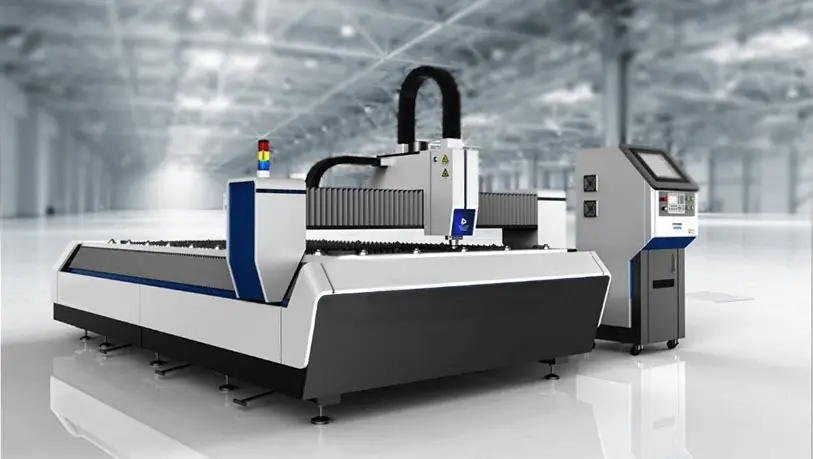
Choosing a laser cutting machine can be a challenging task, just like deciding what to have for lunch. Understanding your needs is key to finding the right product.
Just as everyone has different tastes, everyone's needs are different. What works best for you is what you should choose.
Before purchasing a laser cutting machine, consider the following factors:
1. Purchase cost
Acquisition cost is a significant factor in investing in business development. While growth requires new resources, it should not be undertaken without consideration. This is where skills and research come into play.
If your budget allows, you can opt for top imported brands, such as the top ten laser cutting machine brands in the world.
However, most companies have budgets that may not support purchasing these big brands. The technology behind laser cutting machines, especially metal laser cutting machines, has seen rapid development in recent years.
Nowadays, laser cutting technology has reached a level of maturity and stability. When cost is a concern, choosing a Chinese brand laser cutting machine is also a wise choice.
This way, you can get a suitable machine with a lower purchase cost.
2. Usage requirements
When choosing a fiber laser cutting machine, consider factors such as the scope of your business, the thickness of the cutting materials, and the materials you will be cutting. Next, determine the power and bench size needed for the machine.
Power is a crucial factor affecting the price of a fiber laser cutting machine, with higher power resulting in a higher price and greater work efficiency.
A common misconception is that the higher the power, the better the machine will cut, regardless of the thickness of the sheet. This is not necessarily true.
High power is ideal for cutting thick sheets, while medium power is more suitable for cutting medium-thin sheets. The quality of the cut depends on the optical quality of the machine and not just on the power.
Many manufacturers, big and small, are trying to increase their horsepower, but that doesn't always mean better performance.
In some cases, a machine rated at 8,000 W may have a better cutting effect than one advertised as 15,000 W or 20,000 W.
To cut thick sheets, high power is required. If the power is too low, the plates will not be cut.
Currently, fiber laser cutting machines on the market have powers ranging from 500W to 20,000W and the size of the work table can be customized according to the customer's needs.
To choose a cost-effective fiber laser cutting machine, it is important to evaluate your production demand and select a machine that meets your personal needs.
For example, if you need to cut 1-8mm carbon steel plates, a 1000W laser cutting machine would be enough. If you frequently cut 8mm thick sheets, a 1500W machine would be more efficient. For cutting thin sheets, 1000W is sufficient.
To process aluminum alloys, a fiber laser cutting machine is recommended.
For specific cutting parameters, please refer to the cutting parameter table of the laser cutting machine.
Laser Cutting Machine Cutting Parameters Table
| Metal/Laser Power (W) | 1000W | 1500W | 2,000W | 3000W | 4000W | 6000W | 8,000W | 12,000W |
| Carbon steel (mm) | 1-8 | 1-12 | 1-16 | 1-20 | 1-22 | 1-22 | 1-22 | 1-25 |
| Stainless steel (mm) | 1-4 | 1-4.5 | 1-6 | 1-8 | 1-10 | 1-16 | 1-20 | 1-25 |
| Aluminum alloy (mm) | 1-2 | 1-3 | 1-4 | 1-6 | 1-8 | 1-14 | 1-16 | 1-25 |
| Brass (mm) | 1-2 | 1-3 | 1-4 | 1-6 | 1-8 | 1-14 | 1-16 | 1-25 |
Compared with other cutting systems such as CO2 and plasma laser cutting machines, fiber laser cutting machines offer higher cutting precision and efficiency, with notable advantages including high precision (±0.02mm), stable and efficiency.
3. Cost of use
Fiber laser cutting machines have the advantages of high stability and long service life. With proper operation and regular maintenance, the machine's main parts experience minimal wear.
The main expenses are electricity, gas and general consumables, which are relatively low costs.
4. Main components
As we all know, the high precision and high efficiency of optical fiber laser cutting machine are powerful tools in the metal processing industry.
However, these technical advantages are concentrated in the equipment’s accessories.
Even if the same fiber laser cutting machine uses different accessories, the final cutting result may vary.
Therefore, it is crucial for users to choose cost-effective accessories when purchasing a fiber laser cutting machine.
A laser cutting machine typically consists of six main components:
- laser source
- laser cutting head
- Motor
- Bed
- Numerical Control System
- laser lens
The configuration of the main components of a fiber laser cutting machine has a great impact on its price, especially the quality and brand of the laser source. This significantly determines the base price of the machine.
Here is a guide on how to select the main components of a fiber laser cutting machine.
1) Fiber laser source
The performance and quality of a laser cutting machine largely depend on the quality of its optical components.
Many people believe that power consumption is a key factor in determining machine efficiency, but the most critical factor is not power, but optical quality.
The fiber laser, as the main accessory of the fiber laser cutting machine and its main “power source”, determines the optical quality.
The best fiber lasers on the market include German IPG with a photoelectric conversion rate of about 40%, UK SPI, US n-light, and China's Raycus and Max laser.
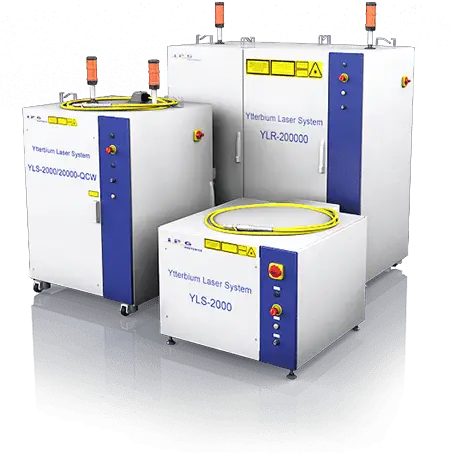
2) Cutting head
The cutting head of a laser cutting machine is a device that emits a laser and consists of a nozzle, focusing lens and focus tracking system.
The cutting head of the laser cutting machine moves along the set cutting path, but the height of the laser cutting head must be adjusted and controlled based on the material, thickness and cutting method.
The quality of the cutting head is mainly determined by the ability of the optical lens group to produce high-quality laser and the presence of a precise adjustment system.
Prominent brands of cutting heads include Precitec and Raytools.
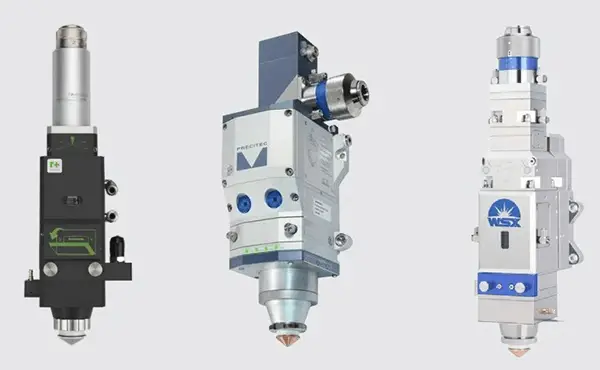
3) Control system
The control system is the main operating system of the optical fiber laser cutting machine.
Its quality plays a crucial role in determining the stability of the machine's performance.
The control system is responsible for guiding the movement of the machine tool's X, Y and Z axes and regulating the laser output power.
In China, the operating system of laser cutting machines is widely used with Cypcut and PA, and each company optimizes it to better suit its own equipment.
This optimization process occurs during review and testing and is relatively simple to operate.
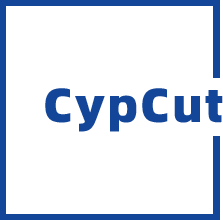
4) Bed
The size of a laser cutting machine's base determines the work capacity it can perform.
Bed size is a fixed feature and cannot be changed.
Before making a purchasing decision, it is important to have a clear understanding of the cutting workload you plan to undertake.
For example, if you plan to undertake large projects, it would be advisable to invest in a large format laser cutting machine.
A large machine tool can significantly reduce the time spent loading and unloading and ultimately result in a considerable reduction in total time cost.
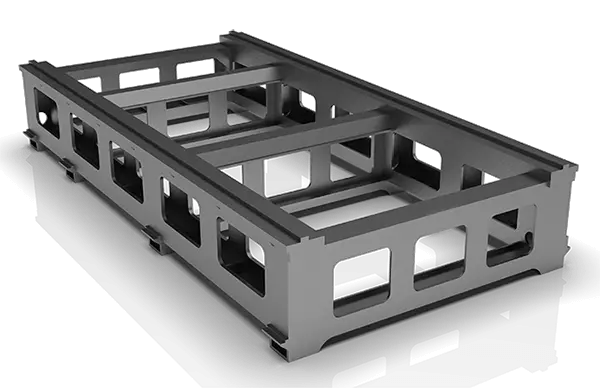
The base of an optical fiber laser cutting machine typically consists of a plate welding base, tube welding base or casting base.
To reduce costs, most laser cutting machine manufacturers choose a plate welding basis.
The bed thickness varies from 8mm to 16mm depending on the laser cutting power. For ultra-high power fiber laser cutting applications, thicker steel plates are used.
Although a plate welding bed is more commonly used, it can have a negative impact on the machine's load capacity, stability and cutting accuracy compared to a casting bed.
Therefore, if budget is not a concern, it is recommended to choose a one-piece cast iron base when purchasing a fiber optic laser cutting machine.
5) Engine
Stepper Motor:
The motor plays a crucial role in determining the cutting accuracy of an optical fiber laser cutting machine.
Some manufacturers opt for imported stepper motors, while others use stepper motors produced by joint ventures. Small businesses often choose generic engines.
Servo-motor:
A servo motor is a motor that controls the operation of mechanical components in the servo system.
It is an indirect speed change device that works in conjunction with an auxiliary motor.
The servo motor can precisely control the speed and position accuracy, and converts a voltage signal into torque and speed to drive the control object.
A high-quality servo motor can significantly increase the cutting accuracy, positioning speed and repeated positioning accuracy of a laser cutting machine.
6) Laser lens
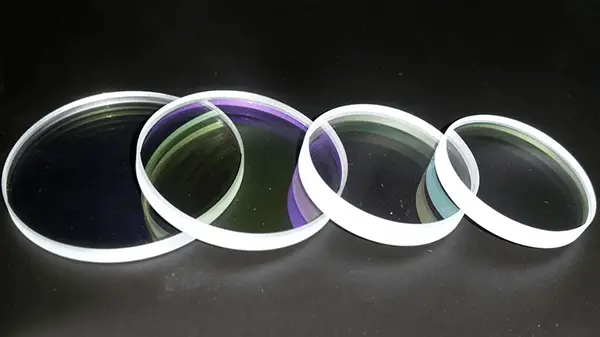
The laser lens plays a role in determining the power of a fiber laser cutting machine. It can be imported or produced nationally.
Lenses produced internally can also be classified into those made with imported materials and those made with national materials.
There is a significant difference in price between these options and also a notable difference in terms of effectiveness and shelf life.
5. Preliminary selection of optical fiber laser cutting machine manufacturer
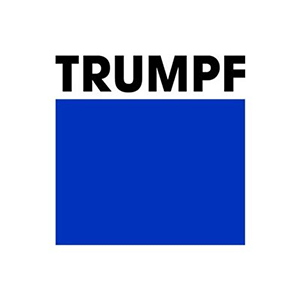
Once your requirements are determined, you can visit the market or contact colleagues who have already purchased a laser cutting machine to evaluate its performance and basic specifications.
It is advisable to communicate with several powerful sellers with favorable prices and conduct on-site investigation afterwards.
During negotiations, it is important to discuss the price, training, payment method and after-sales service of the machine in more detail.
In terms of fiber laser cutting machine brand, it is recommended not to prioritize brand over performance.
If you need to choose a brand, remember that Trumpf is ranked first in the world and Hanslaser is ranked first in China.
6 . After sales service
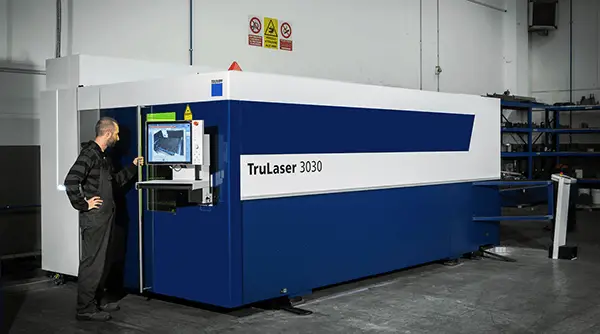
After-sales service is often overlooked and undervalued. People tend to prioritize price over service.
Regardless of how advanced a laser cutting machine is, customers will encounter various problems during use.
In these cases, it is crucial for the seller to provide timely solutions to the customer.
Having professional and fast after-sales service is extremely important for laser cutting machine manufacturers.
They must offer a full service that includes pre-job training during machine operation, as well as maintenance and commissioning of mechanical equipment.
Ultimately, time is money and any delay can result in loss to the user.
Misunderstandings in selecting laser equipment
What is the most critical consideration for users when purchasing laser equipment?
Is it money or market?
No, neither is the most important factor.
While capital and the market are important considerations, they are not the most critical factors.
The key to success in the market is to choose the right processing equipment for the development of your business and your market.
With advances in technology and the market, the power of laser cutting machines is increasing and there are more and more manufacturers.
However, the professional quality of sales personnel is inconsistent, which may lead to misunderstandings for customers when choosing a laser cutting machine.
Our recommendations are as follows:
Myth 1: When power and configuration are similar, the lower priced option is preferred.
(1) Home laser:
The prices of different brands vary a lot even with the same power.
(2) Imported laser vs. home laser:
Although the settings may appear similar, there is a significant difference in practice.
If the price is low, the corresponding input cost will also be low, and the configuration and raw materials will be different, which may affect the stability of the equipment.
Although choosing a lower-priced option may seem like a cost-saving measure, frequent problems during actual use can result in greater actual losses, making the cost savings negligible.
Myth 2: For sheets of the same thickness, laser cutting machines with different powers have different cutting capabilities, so choose the one with low power.
For example, both a 2000W+ power laser and a lower power laser can cut 10mm carbon steel.
However, this does not mean that it is advisable to choose the lowest power laser.
The cutting efficiency of 10mm carbon steel varies between different power ranges, and the power should be chosen based on factors such as budget, capacity requirements, product features, among others.
Myth 3: You want to buy a universal machine.
Many people who just buy a laser machine expect it to have all the functions, including the ability to cut tubes and plates as well as handle other specialized parts.
However, in an attempt to meet these varied functional requirements, the main functions of the equipment may be compromised.
As a result, although all functions may be available, they may not be performed optimally.
It is important to note that a laser cutting machine is a general purpose machine, not a universal machine.
Myth 4: Payment in installments.
Many customers consider factory installments to be a crucial factor when selecting equipment, but the actual down payment for factory installments is often high, which increases financial pressure.
Given the current state of the financial market, it is recommended to opt for the financial leasing method:
(1) The minimum down payment for financial leasing is 10%.
(2) All financially leased equipment is insured and will be compensated in the event of damage caused by natural or man-made disasters (for example, in the event of equipment being damaged by floods, compensation will be provided).
(3) Quality and service are supervised by third parties, which can avoid unattended problems.
(4) The use of financial products can improve the reputation of an individual or a company.
As the company grows and needs to purchase larger and more equipment in the future, the loan amount will be higher and easier to manage, providing an additional financing channel for the company.
Myth 5: The higher the power, the thicker the cut will be.
Although a higher power laser cutting machine may indicate the ability to cut thicker sheets, it does not guarantee that the cut quality will meet the requirements of practical production applications.
Factors such as material properties, cutting efficiency and cooling technology can affect cut quality.
Laser cutting equipment is designed to process sheet metal and is excellent at cutting medium to heavy sheet metal.
Very thick plates fall into the machining category and require specialized machining equipment.
Myth 6: With the same brand and power, the faster the cutting speed, the better.
The faster linear cutting speed of lasers of the same brand and with the same power should be consistent in theory.
If a laser's specifications claim a cutting speed higher than the fastest speed on the market, it may be fraudulent.
Myth 7: What is imported is the best.
Laser cutting machines have been developed in China for decades and the quality of their products has been proven in the market.
In addition, there are more mature suppliers of matching parts in China, which offers advantages in terms of cost-performance, performance and service.
There are many factors to consider when selecting a laser cutting machine, such as the maximum size and material of the workpiece to be processed, the maximum thickness to be cut and the shape size of the raw material, as well as future development plans .
For example, the maximum size of the part after technical modification, the size of the format that saves the most material from the materials supplied by the steel market, the loading and unloading time, etc. must be considered.
Conclusion
With the above introduction on how to select a fiber laser cutting machine, you should now better understand how to choose a machine that suits your needs.
If you still have any questions, feel free to leave us a message in the comments section.

























































